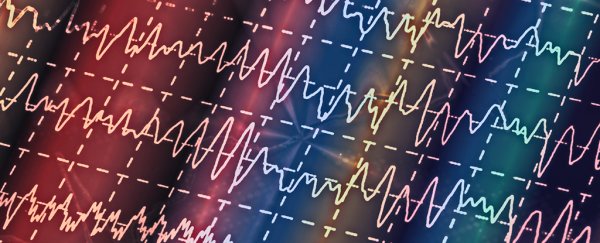An instrument that emits notes according to a person's brain signals is the latest example of mind-controlled technology helping those who have limited movement to engage with the world.
The device neurologists dubbed the Encephalophone won't be popping out Top 40 hits any time soon, but it could still eventually help those who have had a stroke or are restricted by paralysis to engage with music, a task that has been shown to have significant therapeutic benefits.
Marrying electronic tones with brain waves is far from new, with sound being used to observe brain activity barely a decade after electroencephalography – brain wave recording – was first developed.
What is novel in this innovation is the level of accuracy and precision volunteers have produced in the manipulation of specific notes in a musical scale.
Over the decades there have been a variety of attempts to use brain-computer interfaces (BCIs) to produce music, with some success.
In 2011 researchers in the UK used a BCI to allow patients to select and alter the intensity of a pre-selected set of notes by focussing on icons on a screen.
But there's a world of difference using concentration to press a virtual button and accurately selecting notes on a scale.
Advances in BCI technology are enabling finer degrees of control over diverse technologies, making it possible for those who have lost control of limbs to walk, manipulate objects, or even drive again.
Or, in this case, play a virtual keyboard.
"We first sought to prove that novices – subjects who had no training on the Encephalophone whatsoever – could control the device with an accuracy that was better than random," says researcher Thomas Deuel from the Swedish Neuroscience Institute and the University of Washington, who happens to be both a musician and a neurologist.
The Encephalophone is a device that samples different sets of brain waves to control a synthesised piano.
Brain waves are basically forms of electrical activity produced by the tiny fluctuations in voltage across the membranes of the cells in the central nervous system.
Different patterns of voltage change produce different frequencies, from the low buzz of delta waves to the hum of gamma waves. Changes in activity across the brain, whether through changes in consciousness or concentration, can create subtle variations in different wave patterns.
In this case, the researchers collected alpha waves – also called the posterior dominant rhythm (PDR) – and mu waves from the visual and motor cortex parts of the brain.
To calibrate the device, the 15 adult volunteers used two methods. One was a simple matter of opening and closing their eyes for 15 seconds to change activity in their visual cortex. The other involved visualising opening and closing their right hand.
Both methods linked changes in brain activity with eight values along a C major musical scale.
After a brief individual jam session to practice, the volunteers were required to match a note with three toots from the Encephalophone.
The results weren't toe-tapping, but they were better than random.
"These first subjects did quite well, way above chance probability on their very first try," says Deuel.
Listening to music has been shown to have therapeutic benefits for those who have suffered neurological trauma following a stroke.
For people who played music prior to losing the ability to speak or use their hands, making music might be more than just therapeutic – it could help them regain a lost identity.
"I thought it would be great to use a brain-computer instrument to enable patients to play music again without requiring movement," says Deuel.
Deuel and his colleagues are now working with more people to see how much they can improve with additional training on the Encephalophone.
"There is great potential for the Encephalophone to hopefully improve rehabilitation of stroke patients and those with motor disabilities," Deuel says.
This research was published in Frontiers in Human Neuroscience.
